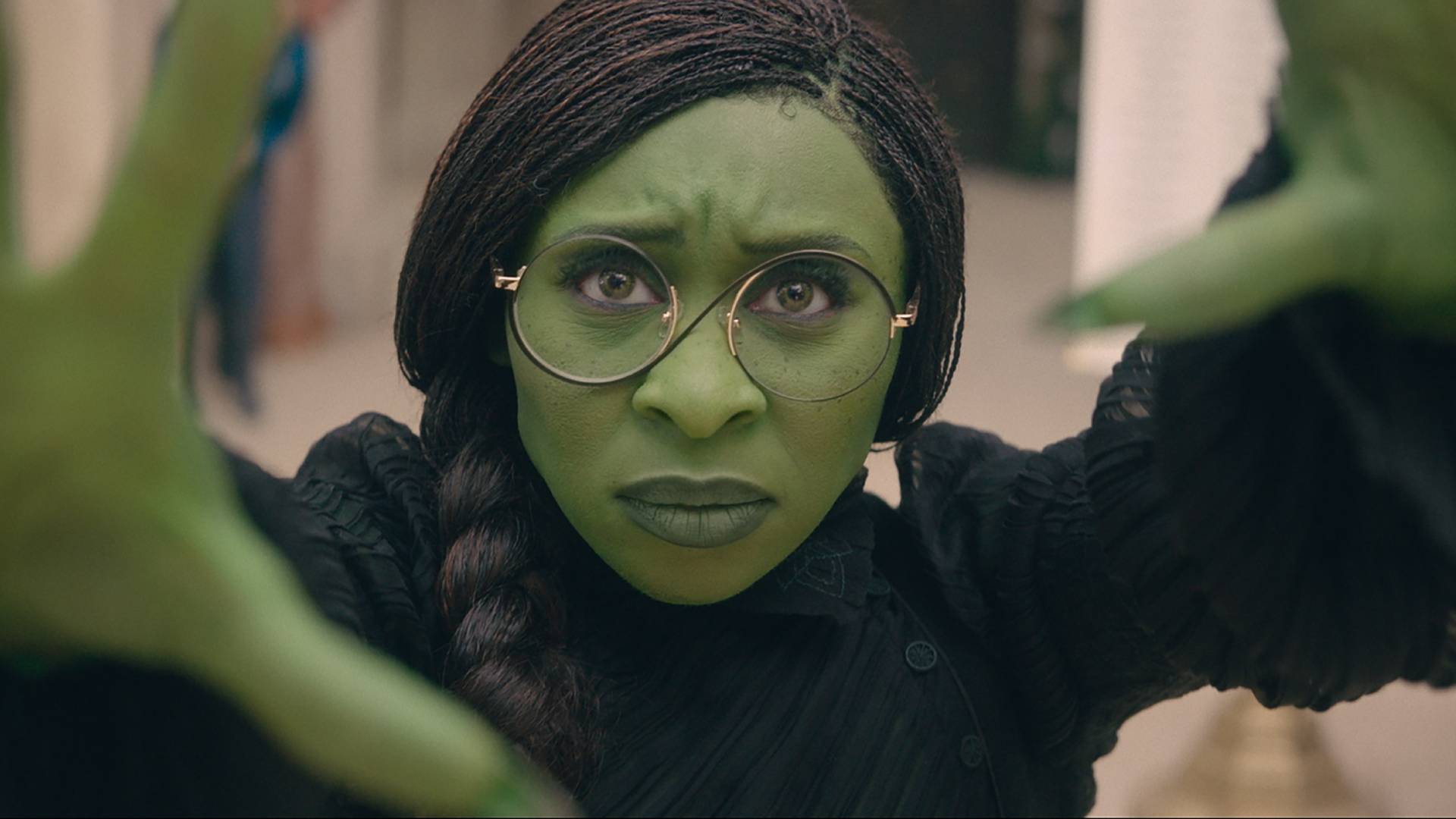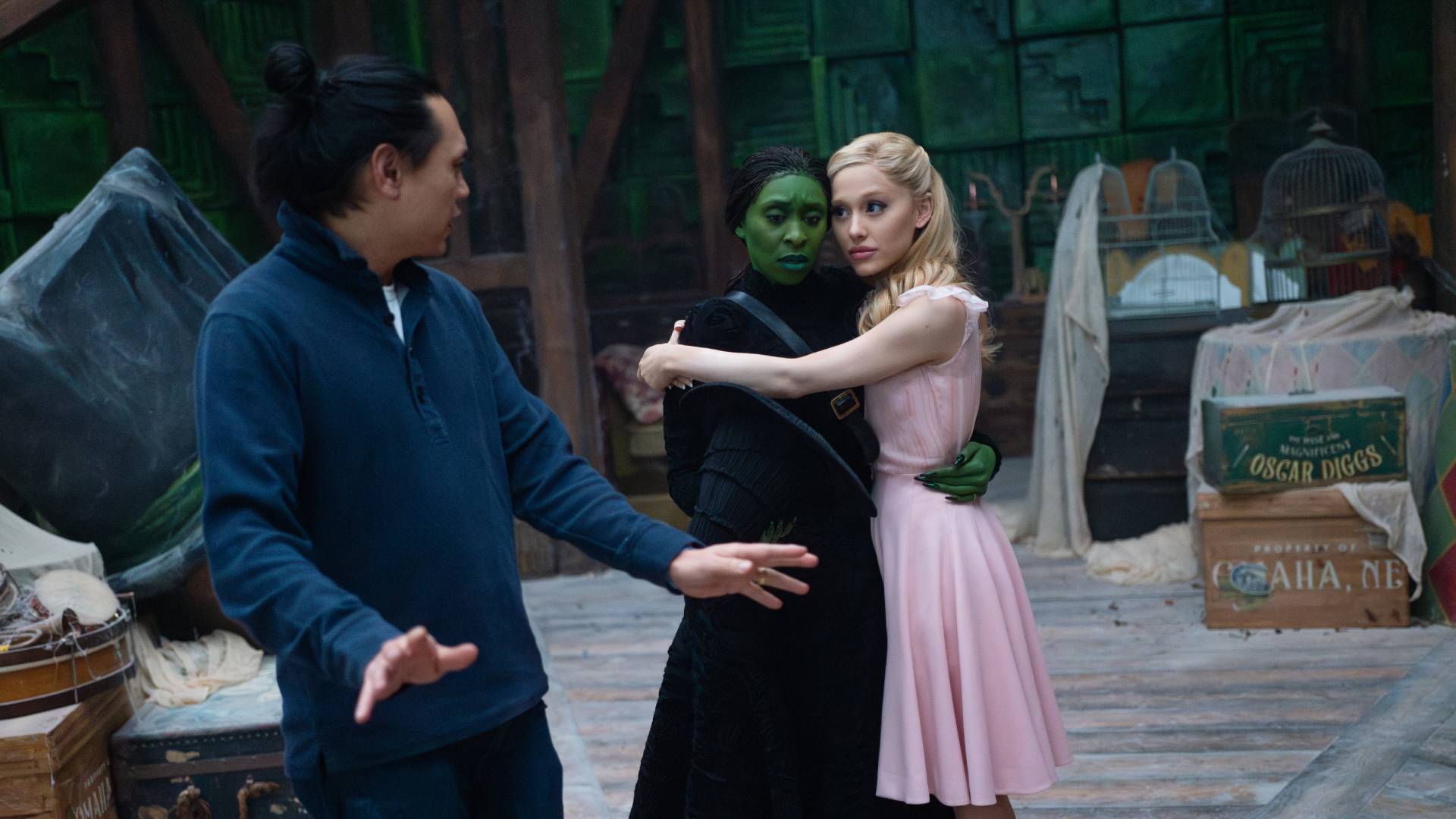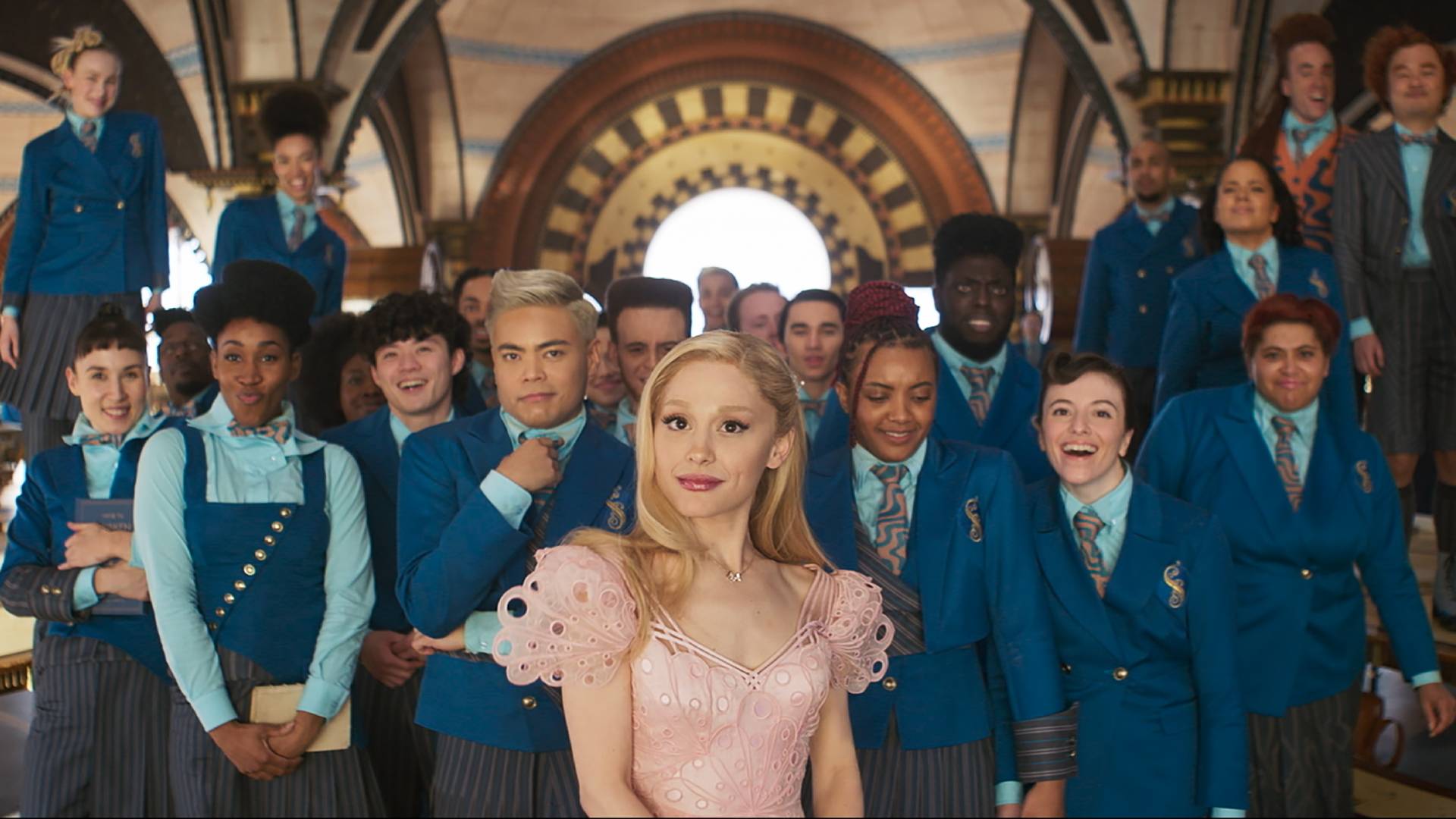
Jon M. Chu is no stranger to bringing Broadway hits to the big screen. The director of 2021's In the Heights adapted Lin-Manuel Miranda's pre-Hamilton hit into a critically acclaimed movie, and now he's turned his sights from New York City's Washington Heights to the yellow brick road. Chu, who's also behind the rom-com Crazy Rich Asians, is helming Wicked, the Wizard of Oz prequel that took both Broadway and the West End by storm, with Ariana Grande and Cynthia Erivo taking on the lead roles of two polar opposite witches: popular Glinda and green-skinned outcast Elphaba.
The first full-length trailer for the movie musical releases today, giving us our best look yet at Chu's take on Elphaba and Glinda's friendship, the magical Shiz University, and the Emerald City – where they meet the Wizard of Oz (Jeff Goldblum), a mysterious figure with a vendetta against Elphaba...
We sat down to chat with Chu to ask him about bringing his version of Oz to life, heading back in time to Elphaba's childhood, and the personal touches Erivo and Grande brought to their roles.
The following Q&A has been edited for length and clarity.
GamesRadar+: I'm really interested in how you created this version of Oz for the screen because you've got so much more scope and scale with a movie set than a theatre set. What were your reference points – did you look at the Victor Fleming movie? Did you look at the novel that Wicked is based on? Where do you start with creating such a vast landscape?
Jon M. Chu: Well, it was a big challenge. Oz is a giant world that has been interpreted many times and the L. Frank Baum novel has such a beautiful design to it, with these pops of colors within it and it has this art deco feel to it as well. I needed to build a team that understood that what we wanted to do was immerse the audience in this world where I felt like I'd never been in Oz. So Nathan Crowley, our production designer, Paul Tazewell our costume designer, Alice Brooks, our cinematographer, we all came together and we just started putting things together and used the images from the original book, the [W.W.] Denslow drawings, as the beginnings of our inspiration. All the lands were connected by waterways, so that really helped us be like, 'Oh, okay, if they're connected by waterways, before the era of the yellow brick road, [that] probably was their main transportation.' Our movie has such big themes of transition and change and transportation has such a big place in that, whether it was from walking on a road, riding on a horse, automobiles, a train, or actual flight. So this idea of progress, and what does progress take? It was really through story that we found how we were going to design it.
But it was challenging, you know, we've seen magic schools before. So how do you make it unique to Oz? We would always go back to those original drawings and things that made us delighted. In fact, every time something was too normal, we'd look at it, like, 'What's delightful about it?' When you think of Alice in Wonderland, Wonderland is designed to make you feel a little bit crazy, and Neverland is a place for your childlike imagination to play. And Oz's place in those worlds, to us, was wonder and delight – that you were supposed to follow a yellow brick road and this guy was going to give you all the answers and give you your heart's desire. It was like this perfect thing, and in this movie, we're going to break that, we're going to shatter that. So to establish that facade at first was so important. And at the same time establish this natural side – what was Oz before [the Wizard] ever arrived? And so that's why nature has been a big part of our design, the grass breaking through the road and the trees and things like that, all sort of circular. Elphaba is the crack, the 'z' in Oz, so as the movie develops you see more sharp edges start to come in and invade that space, but the two together are what make life beautiful.

Speaking of Elphaba, from the trailer, it looks like we get a flashback to her childhood in a way that isn't really explored in the stage show. Why was it important to you to delve a bit more into her backstory in this movie?
Well, we really had to gather our horses around the Elphaba character. When we looked at what two movies could look like, [we thought] is one about Elphaba and one more about Glinda? What are we driving people towards so that each movie feels satisfying, emotionally, in itself, not like you're left on a cliffhanger? Of course, plot points are left to stretch through, but emotionally, you want to feel like 'Defying Gravity' or wherever we end up is the thing you've been waiting for. And that means moving backward in this character of Elphaba.
The movie starts with a narrator who is not Elphaba, who is telling [you] that she's dead and then you go back and you find out more about her. But then you go back to a time when [Elphaba and Glinda] were in school together, and then you meet Elphaba. So it's very late [in the movie]. But when you start to track Elphaba, you find out you need to know more – so many times she doesn't have dialogue and you're like, she needs to say something here. Sometimes, Elphaba can get treated as just a one-liner joke: 'Oh, that girl who dresses weird and moves weird.' But with Cynthia, we couldn't do that. There's no way, she was like, 'This is where I live, it's not gonna have nothing. I would have a book, I would have things, I'm a woman, I would have what I want to take care of myself. I don't take not take care of myself.' So we had to build props and things that she needed as a character. [She was] like, 'When I am dancing at the dance, I'm not just being silly to be silly. This is not a joke. I need to find how I express myself when I move. It's the first time I'm making space for my movements. Whether they like it or not, it's my defiance.' And that suddenly becomes much more emotional, it suddenly becomes so much more character-driven.
So everything we did was driven on that arc of, 'Where is Elphaba? Where is Glinda? Why are they necessary? Why do they need each other to be the best that [they] can be? And why does that hurt our hearts?' To actually be the best that they can be, they have to go apart. And that push and pull is what we did in the script to try to get it there so that you would feel all the feels because, actually, a movie requires that. A show, you can kind of let it go when it's fun, it's whatever. But a movie, you can call bullshit on a lot, so you have to tie all that up.

Going back to what you said about Cynthia and Elphaba – was there a lot of that kind of collaboration with her and Ariana? It sounds like Cynthia's kind of put her own riff on 'Defying Gravity,' so were they keen to put their own personal touches on their musical numbers?
All the time. That was the thing between Ari, Cynthia, and I, and even Jeff [Goldblum] and Michelle [Yeoh] and Johnny [Bailey], we were creating this together. That's the way I like to work. It's scary to make Wicked because everyone has such high expectations and if we do it, if we go middle of the road, no one will be satisfied, especially us. We all had to be bold, and we all had to stick our necks out and sometimes be scared of what people would think. But we knew that the only way to excellence was to be able to go through that together, so we linked arms and said, 'Okay, let's push each other. Let's find the truth in all of this,' because we knew how much the original musical still to this day has such truthful words in it, so we would find every ounce of where our own lives were intersecting with these characters. It felt like therapy the whole time because the story is full of moments of change and decisions and right now in our lives, all across the world, everyone's making significant changes and decisions based on what our next chapter is going to be.
Wicked arrives in cinemas on November 28. In the meantime, check out our guide to the rest of this year's biggest movie release dates.







